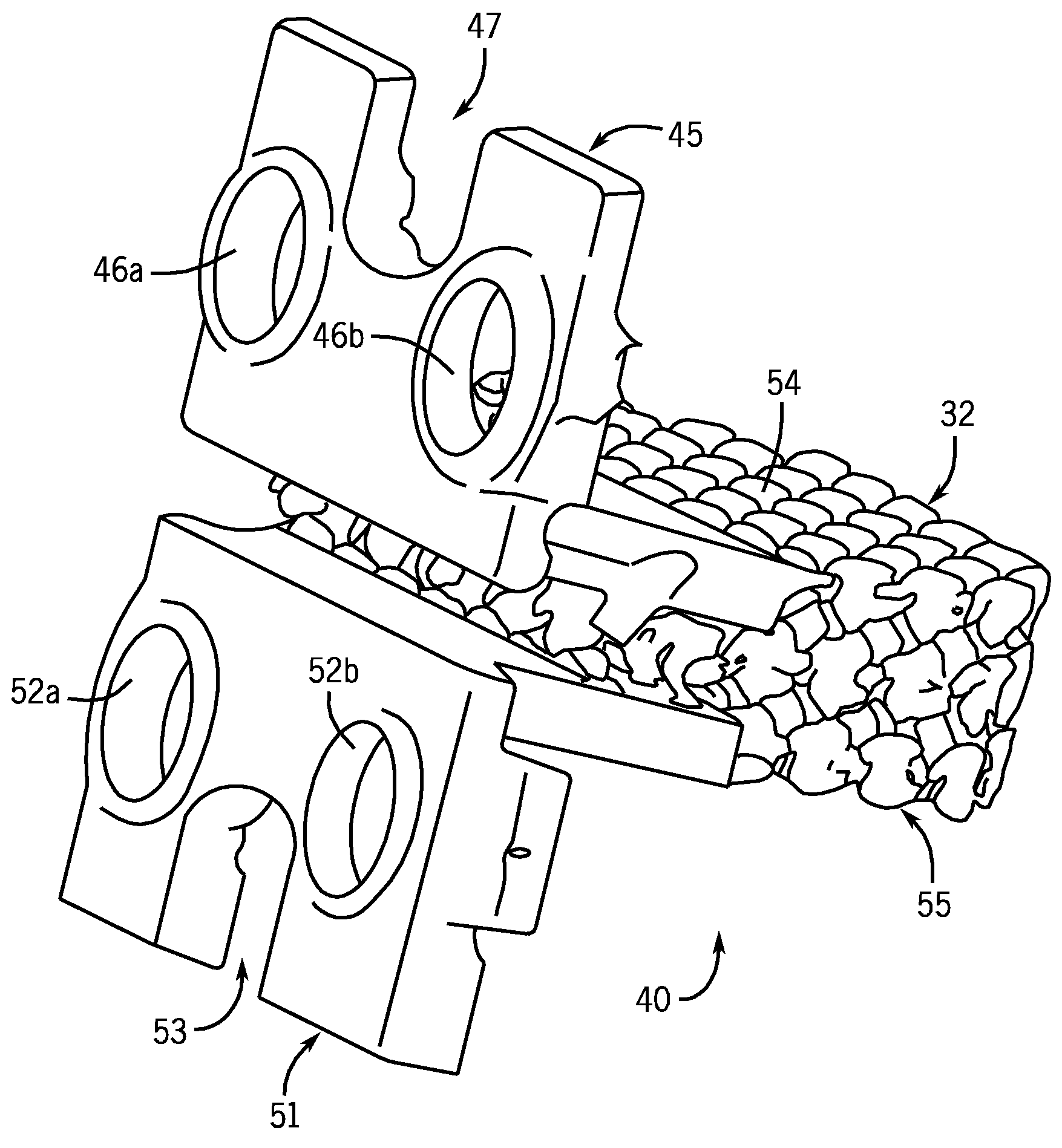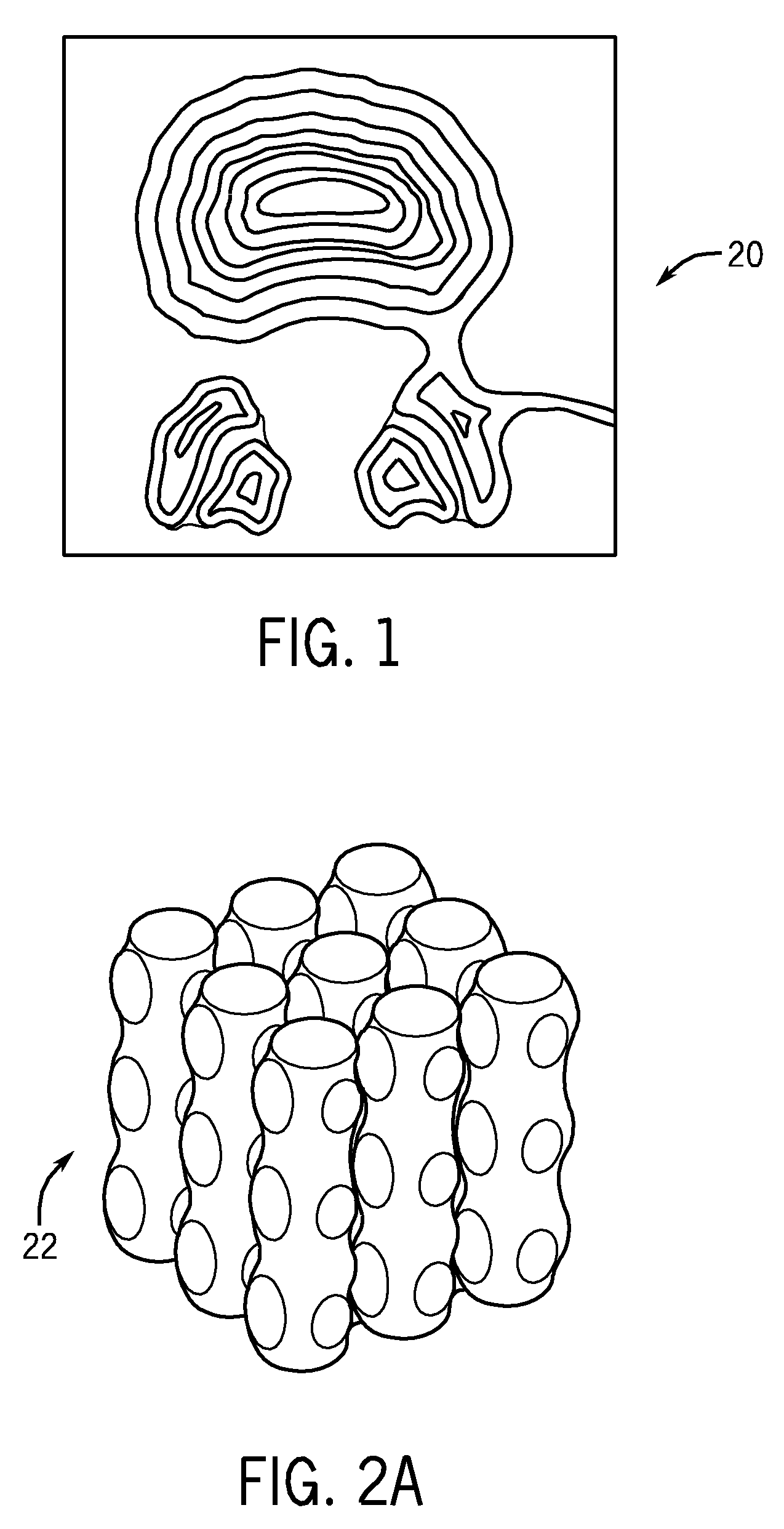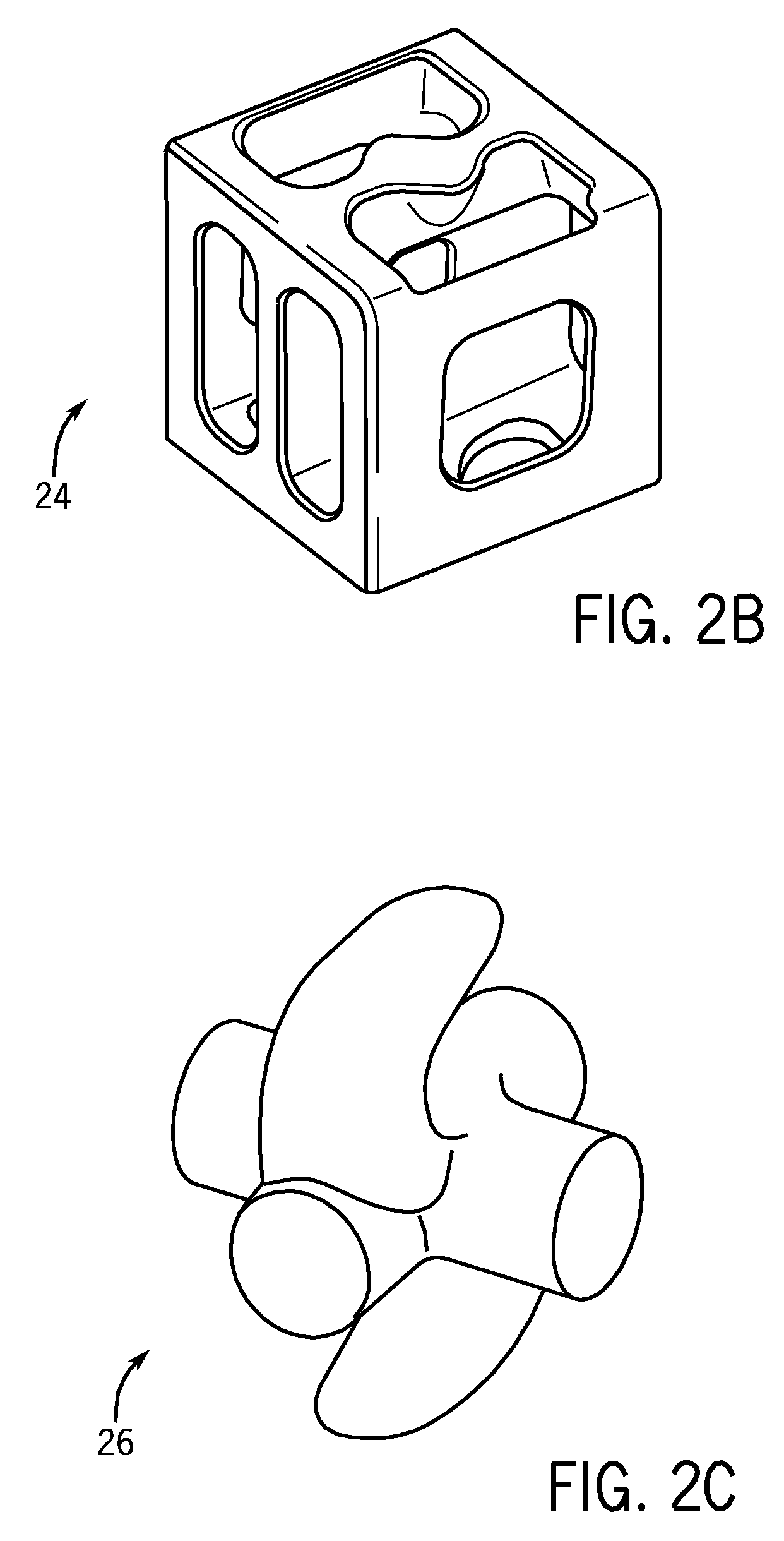Engineered Scaffolds for Intervertebral Disc Repair and Regeneration and for Articulating Joint Repair and Regeneration
a technology of intervertebral discs and engineering scaffolds, applied in the field of biomaterial scaffolds, can solve the problems of inability to design scaffolds, subject to wear and fatigue problems of synthetic materials, etc., and achieve the effect of controlling geometric thickness and achieving effective mechanical and mass transport properties
- Summary
- Abstract
- Description
- Claims
- Application Information
AI Technical Summary
Benefits of technology
Problems solved by technology
Method used
Image
Examples
Embodiment Construction
[0047]An intervertebral disc scaffolding according to the invention includes: (i) a designed porous microstructured scaffolding itself, made from biodegradable polymers (e.g., polycaprolactone), biodegradable ceramics (e.g., calcium phosphate), or non-biodegradable metals or metal alloys (e.g., titanium or titanium alloys), or mixtures thereof, and (ii) fixation structures for integrating the designed intervertebral scaffolding to the adjacent vertebrae. As used herein, a “biodegradable” material is one which decomposes under normal in vivo physiological conditions into components which can be metabolized or excreted.
[0048]The scaffolding may include a bioactive agent at any desired location in the scaffold. A “bioactive agent” as used herein includes, without limitation, physiologically or pharmacologically active substances that act locally or systemically in the body. A bioactive agent is a substance used for the treatment, prevention, diagnosis, cure or mitigation of disease or ...
PUM
| Property | Measurement | Unit |
|---|---|---|
| Microstructure | aaaaa | aaaaa |
| Mechanical properties | aaaaa | aaaaa |
| Permeability | aaaaa | aaaaa |
Abstract
Description
Claims
Application Information
 Login to View More
Login to View More - R&D
- Intellectual Property
- Life Sciences
- Materials
- Tech Scout
- Unparalleled Data Quality
- Higher Quality Content
- 60% Fewer Hallucinations
Browse by: Latest US Patents, China's latest patents, Technical Efficacy Thesaurus, Application Domain, Technology Topic, Popular Technical Reports.
© 2025 PatSnap. All rights reserved.Legal|Privacy policy|Modern Slavery Act Transparency Statement|Sitemap|About US| Contact US: help@patsnap.com



